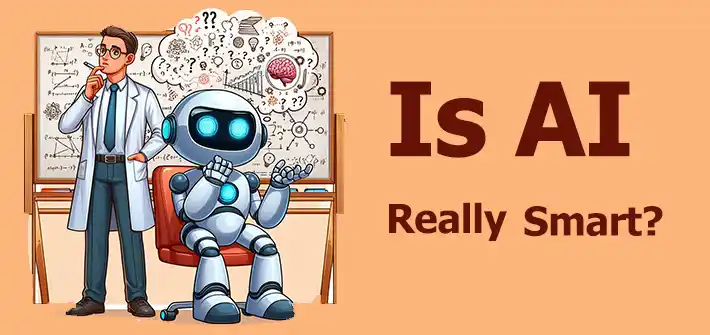Introduction
In the rapidly evolving landscape of technology, the concept of artificial intelligence (AI) has captured the imagination of researchers, developers, and the general public alike. However, a fundamental question persists: Is AI truly smart? This comprehensive article delves into the depths of intelligence in AI systems, exploring the criteria, attributes, and advancements that contribute to their perceived smartness.
Defining Smartness in AI
Criteria and Benchmarks
To ascertain the smartness of AI, it’s crucial to establish criteria and benchmarks. This section explores the metrics used to measure intelligence in machines, laying the foundation for a nuanced understanding of smart AI.
Characteristics of Smart AI
What makes AI systems intelligent? Unraveling the characteristics and attributes that contribute to their smartness is essential. This segment defines smartness in the context of artificial intelligence, providing a framework for further exploration.
Unleashing the Power of ChatGPT

Machine Learning and Smart AI
Learning Algorithms
Machine learning plays a pivotal role in enhancing the intelligence of AI systems. Investigate the intricacies of learning algorithms and their contribution to the smartness of AI, along with an analysis of adaptive learning processes.
Adaptability and Improvement
Understanding how machines adapt and improve over time is key to unraveling the smartness in AI. Explore the learning mechanisms that enable AI systems to evolve and refine their capabilities.
Cognitive Abilities in AI
Mimicking Human-like Thinking
Comparing cognitive abilities in AI to human-like thinking processes offers insights into the realms of decision-making and problem-solving. This section highlights areas where AI demonstrates smart decision-making akin to human cognition.
Smart Decision-Making
Delve into specific examples where AI showcases smart decision-making, emphasizing its ability to analyze complex scenarios and provide intelligent solutions.
The Limitations of AI Intelligence
Inherent Boundaries
No technology is without limitations. Examine the inherent boundaries of intelligence in AI systems, understanding where AI may fall short of human-like smartness and the challenges it faces.
Areas of Shortcomings
Explore specific areas where AI may struggle, shedding light on scenarios where human intelligence still outshines machine intelligence.
How to Use ChatGPT in Programming
Natural Language Processing and Smart AI Communication
Language Understanding
Natural Language Processing (NLP) plays a crucial role in enhancing AI communication. Examine the significance of NLP in deciphering and generating human-like language, contributing to the overall smartness of AI.
Advancements in Language Processing
Discuss recent advancements in language processing, shedding light on breakthroughs that have elevated AI communication to new heights.
The Evolution of Smart AI
Historical Milestones
Chart the evolution of smart AI over time, tracing historical milestones that mark significant advancements. Explore breakthroughs that have played a pivotal role in enhancing the smartness of AI.
Contributing Factors
Discuss the contributing factors that have propelled AI from its early stages to the sophisticated systems we encounter today. Understand the technological, algorithmic, and theoretical advancements that have shaped smart AI.

Ethical Considerations
Addressing Bias
Smart AI brings ethical considerations to the forefront. Delve into discussions on bias in AI systems, exploring the challenges and responsibilities associated with creating ethically sound intelligent machines.
Developer and User Responsibility
Examine the shared responsibility of developers and users in ensuring ethical AI practices. Discuss the need for transparency, accountability, and continuous scrutiny to mitigate biases and ethical concerns.
Human-AI Collaboration
Synergies in Intelligence
Explore the potential for collaboration between human and artificial intelligence. Highlight scenarios where the combination of human and AI intelligence creates synergies, emphasizing the complementary nature of their capabilities.
Realizing Collaborative Potential
Discuss real-world examples where human-AI collaboration has led to groundbreaking outcomes, showcasing the potential for a harmonious partnership between human ingenuity and machine intelligence.
The Future of Smart AI
Anticipating Developments
Speculate on the future developments that could further enhance the smartness of AI. Discuss emerging technologies, potential breakthroughs, and challenges on the horizon that may shape the future trajectory of smart AI.
Balancing Expectations
Address the balance between optimistic expectations and the realistic challenges that lie ahead. Navigate the complexities of anticipating the future of smart AI with a thoughtful exploration of possibilities.
Conclusion
In concluding this comprehensive exploration of smart AI, it’s evident that artificial intelligence has reached remarkable heights in terms of perceived smartness. As we navigate the intricate landscape of AI, understanding its capabilities, limitations, and ethical considerations becomes paramount. The future holds the promise of even smarter AI, but it requires a collaborative effort to ensure responsible development and deployment.




